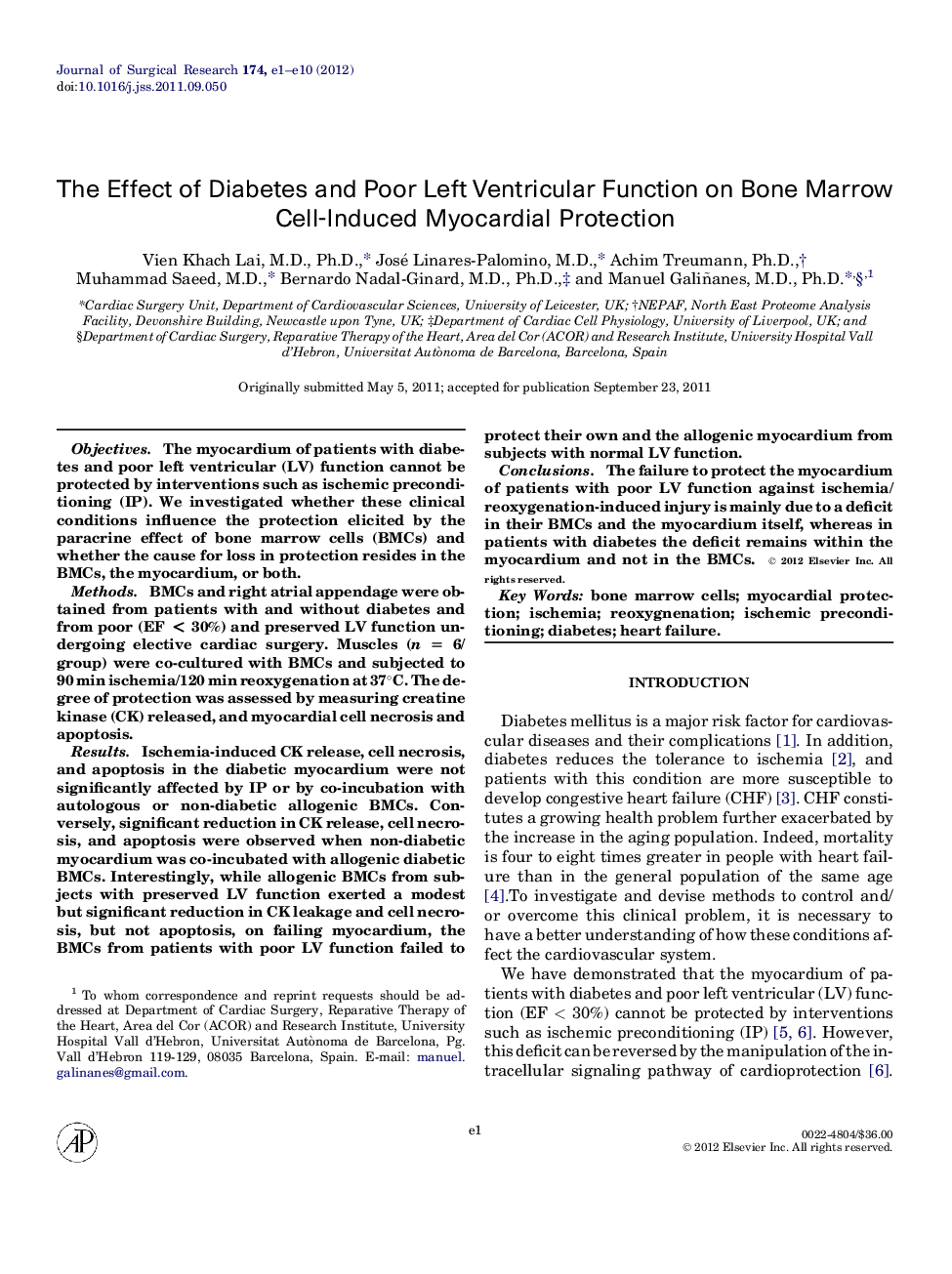| کد مقاله | کد نشریه | سال انتشار | مقاله انگلیسی | نسخه تمام متن |
|---|---|---|---|---|
| 4301784 | 1288443 | 2012 | 10 صفحه PDF | دانلود رایگان |

ObjectivesThe myocardium of patients with diabetes and poor left ventricular (LV) function cannot be protected by interventions such as ischemic preconditioning (IP). We investigated whether these clinical conditions influence the protection elicited by the paracrine effect of bone marrow cells (BMCs) and whether the cause for loss in protection resides in the BMCs, the myocardium, or both.MethodsBMCs and right atrial appendage were obtained from patients with and without diabetes and from poor (EF < 30%) and preserved LV function undergoing elective cardiac surgery. Muscles (n = 6/group) were co-cultured with BMCs and subjected to 90 min ischemia/120 min reoxygenation at 37°C. The degree of protection was assessed by measuring creatine kinase (CK) released, and myocardial cell necrosis and apoptosis.ResultsIschemia-induced CK release, cell necrosis, and apoptosis in the diabetic myocardium were not significantly affected by IP or by co-incubation with autologous or non-diabetic allogenic BMCs. Conversely, significant reduction in CK release, cell necrosis, and apoptosis were observed when non-diabetic myocardium was co-incubated with allogenic diabetic BMCs. Interestingly, while allogenic BMCs from subjects with preserved LV function exerted a modest but significant reduction in CK leakage and cell necrosis, but not apoptosis, on failing myocardium, the BMCs from patients with poor LV function failed to protect their own and the allogenic myocardium from subjects with normal LV function.ConclusionsThe failure to protect the myocardium of patients with poor LV function against ischemia/reoxygenation-induced injury is mainly due to a deficit in their BMCs and the myocardium itself, whereas in patients with diabetes the deficit remains within the myocardium and not in the BMCs.
Journal: Journal of Surgical Research - Volume 174, Issue 1, 1 May 2012, Pages e1–e10